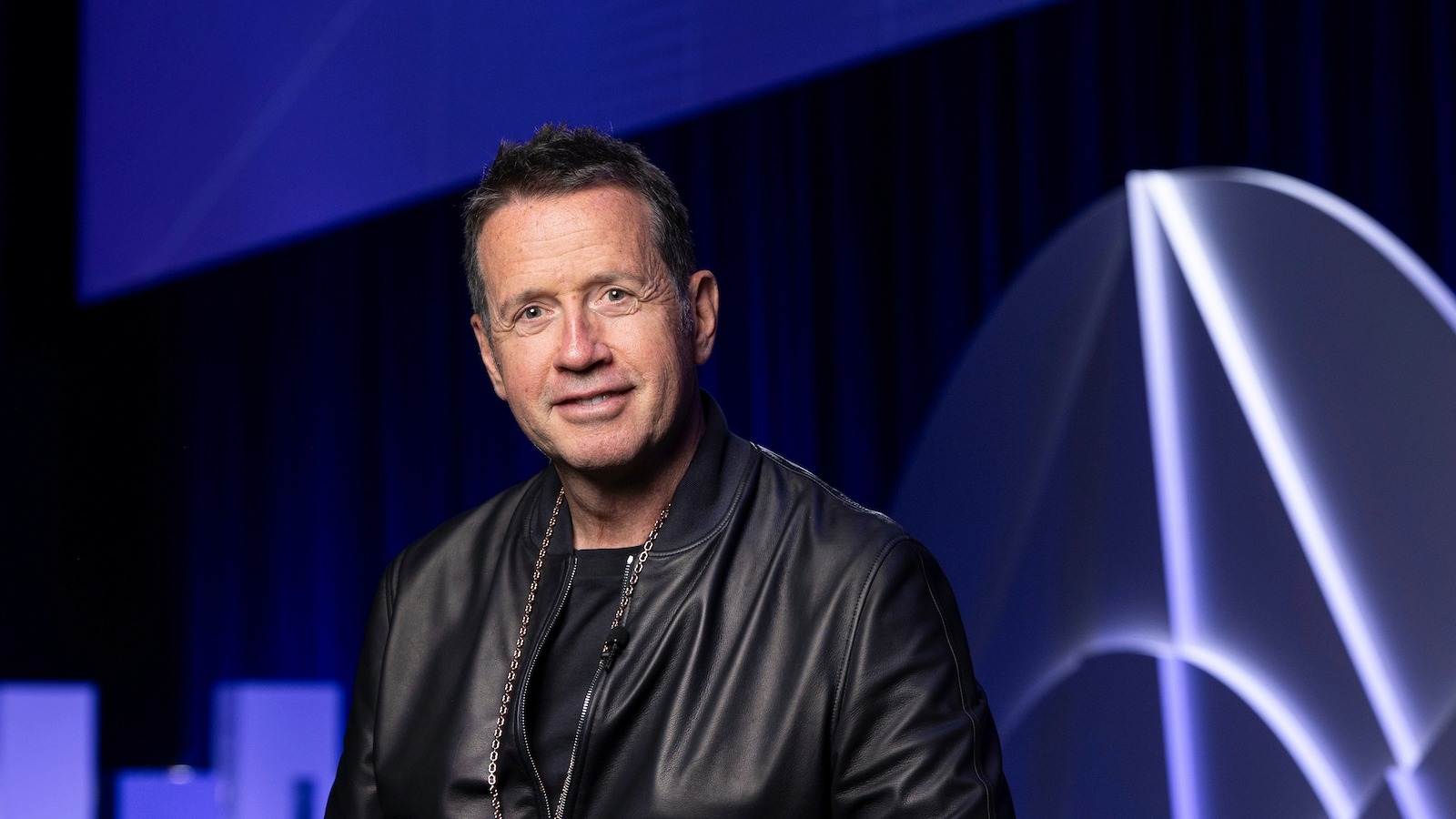The Coronavirus pandemic has forced companies to rethink their digital marketing strategies. Brands are adapting sales channels, analysing customer data and assessing online user experience in a bid to stand out online. DLG CEO and Founder David Sadigh and Contentsquare Chief Strategy Officer Jean-Marc Bellaiche discuss how brands can best adapt to the ‘new normal’.

The Coronavirus pandemic has forced companies to rethink their digital marketing strategies. Brands are adapting sales channels, analysing customer data and assessing online user experience in a bid to stand out online. DLG CEO and Founder David Sadigh and Contentsquare Chief Strategy Officer Jean-Marc Bellaiche discuss how brands can best adapt to the ‘new normal’.
There can be no doubt that the global coronavirus pandemic hit many industries hard, forcing them to rethink their digital marketing strategies as consumer behaviour dramatically shifted during the crisis.
With the closure of stores around the world, companies and brands had to amplify their digital marketing efforts, in a bid to boost revenues and reach customers online. One of the harder-hit industries was luxury, making this period one of the most difficult challenges the market has ever had to face.
The crisis has already had a dramatic impact. The market for personal luxury goods sales fell by 25 percent in the first quarter of this year, according to consultancy Bain and Company, with the slowdown expected to accelerate in the second quarter, leading to estimated contraction of 20 to 35 percent for the full year.
These changes meant the luxury industry and indeed, almost all other industries have had to rethink their business models particularly when it comes to online. While some brands are taking a more “wait and see” cautionary approach, others are experimenting more with their digital strategies, from offering more personalised sales tactics and providing more transparency around brand values, to hiring data analysts and UX specialists in a bid to stand out online.
Here, we look at some of the key points discussed between DLG (Digital Luxury Group) CEO and Founder David Sadigh and Contentsquare’s Chief Strategy Officer Jean- Marc Bellaiche on how businesses can best adapt their digital marketing strategies to align with the radical shifts in consumer behaviour seen during the global pandemic.
Adapt To Survive
The crisis forced luxury brands to close some of their retail stores and to rethink their businesses models in a bid to survive. Some brands, who initially may not have been looking for ways to develop their digital marketing, took a more proactive approach to improve their online presence and conversion rate.
We saw new behaviours emerging, said Jean-Marc Bellaiche, who oversees the strategy for Contentsquare – an experience analytics platform that helps businesses understand how and why users are interacting with their digital channels. “Digital was already important but, now for every brand, digital is the main concern. Brands are looking for ways to improve their online presence and online conversion rate.”

“Some sectors have used this period to improve their digital strategy. A lot of e-commerce improvements happened in 2-3 months, which are usually done in 2-3 years,” noted Bellaiche. Checkout improvements, customer support tools upgrades and a reduction of sales partners are just some of the changes that brands undertook during the earlier months of the year.
It’s a view shared by DLG CEO and Founder David Sadigh. “A lot of brands tried new things and will continue to test new things because they have no choice if they want to survive,” he said, who found an array of different reactions within the luxury industry.
“Some luxury companies were lost regarding communication and decided to remain silent while others decided to take this situation as an opportunity to grow their e-commerce strategy by investing and developing more of an omnichannel strategy. Also, by default, brands that already had e-commerce platforms benefited from a transfer of existing buyers. From retail or offline buyers to online buyers,” he added.
Join Luxury Society to have more articles like this delivered directly to your inbox
Personalised sale channels
One way that luxury companies have adapted their online activities is utilising new sales channels, like WhatsApp and Zoom, for personalised transactions, noted Sadigh and Bellaiche.
A lot of our clients, especially in luxury watchmaking, high-end jewellery and the luxury car industry, used WhatsApp for transactions with their clients, said Sadigh. “If the client already knows the car they want to buy, they only need to ask the salesperson to have this car. WhatsApp and Zoom are getting closer to the services offered in China by WeChat. These trends are impacting the American companies such as Facebook, they need to integrate these new services. It will not be surprising to see a new version of Facebook including video and transaction services.”
It's a trend also seen by Bellaiche. “Salespeople working in luxury boutiques called their clients to present a new collection or new products. Some of them also delivered the new products to the clients’ house. Neiman Marcus has a mobile application where a client can communicate with their personal shopper about purchases during the crisis.”
“These new sales channels will continue to be used by companies and are interesting for luxury brands as they offer a personalised service,” he added.
Own Your Data
Another point for luxury brands to consider, is knowing how to use efficiently all the data that it has available. Companies need to find the best solutions and tools that will help them to improve their results, particularly from a user experience vantage point.
For instance, having an understanding of why some users are visiting a site, consuming its content, adding to their cart but not completing a sale are just some of the things that brands should consider about a customer’s user experience.
Figuring out why users visit a site is also key. Many users often visit brand sites to find out information about a product, but leave the site to buy the same product on a retailers’ site.
By understanding these elements of customer data, companies will be better served in knowing how to offer a better digital experience for their users, which in turn may help drive sales. During the crisis lockdown, those with a strong online presence and e-commerce offering like Farfetch saw a rise in traffic and transactions thanks in large part to their already established business models. Companies that had a “Click and Mortar” strategy were also less impacted as they were able to transfer their market shares from offline to online. These examples demonstrate how companies who utilise their customer data for deeper insights have benefitted from their learnings.
Brand values and transparency
Many brands used the change of pace in the fashion and luxury industry to redefine their brand values, launching and investing more into sustainability and social initiatives that they wanted to be more involved in.
A recent study published in July by consultancy McKinsey showed that consumers want fashion players to upload their social and environmental responsibilities amid the crisis, with 67 percent of surveyed consumers considering the use of sustainable materials to be an important purchasing factor and 63 percent stating they consider a brand’s promotion of sustainability in the same way.
The survey also showed that while 70 percent of surveyed consumers stuck with brands they know and trust during the crisis, younger consumers – particularly Gen-Zers and millennials, are more likely to experiment with smaller and lesser-known brands.
“It will be interesting to follow these sustainable initiatives in the mid-term and long term because we know that today clients are more concerned regarding the origin of the products and the type of organisation behind them,” said Sadigh. “It would also be interesting to understand in the mid-term and long term if the brands supporting the black lives matter movement for example, will continue to be as much involved and supportive.”
One thing brands must note is that it is not enough for them to demonstrate a passing interest in subject matter that they think their customers are interested in, but to really take the time to listen, learn and invest in issues that they are committed to as part of their aim to be more transparent and open with their audiences.
Transform Your Culture
However, the biggest opportunity for a luxury brand to really facilitate change within its business is the capacity to transform its culture, noted Bellaiche. It is important to digitalise luxury companies and to change their culture for a more innovative, agile and collaborative one. The notion of “try, fail, learn” as seen with Amazon where it experimented with mobile phones but failed and learned from its experiences to succeed with Alexa and Prime TV is a key example to follow.

Companies must be agile, said Sadigh. The companies with a perfectly organised supply chain, a good knowledge of the final client and a good knowledge of data seem better placed to react to the challenges of Covid-19 crisis. Moncler is a good example of such a brand, noted Sadigh, as the company takes a ‘digital-first’ approach throughout its organisation, from directly managing its e-commerce to defining its corporate structure through its digital platforms and customer touchpoints.
Moncler’s prioritisation of connection, from its ‘Energy Plan’ programme to help its team share at least one moment during each day, to its private Instagram account dedicated to its staff called @Monclertogether, organising different activities for its employees, are just some of the ways it is pioneering change within its company culture.
Culture is more important than strategy itself, said Bellaiche. “One important thing I learnt throughout my career both as a consultant and an executive, was a quote from Peter Drucker (a teacher from Harvard) – ‘Culture eats strategy for breakfast’ … This implies that the culture is more important than the strategy itself because it will determine your capacity to react during good or bad times. This is the reason why luxury companies need to look for new talents such as people working for start-ups who have this capacity to innovate, to collaborate and to react faster.”
Cover Image: Photo by Canva Studio from Pexels
If you are looking for further insights on how to optimise your digital offerings and customer conversion rate to help drive sales, ContentSquare & DLG are offering a limited number of premium level assessments and one to one video call sessions to help.










